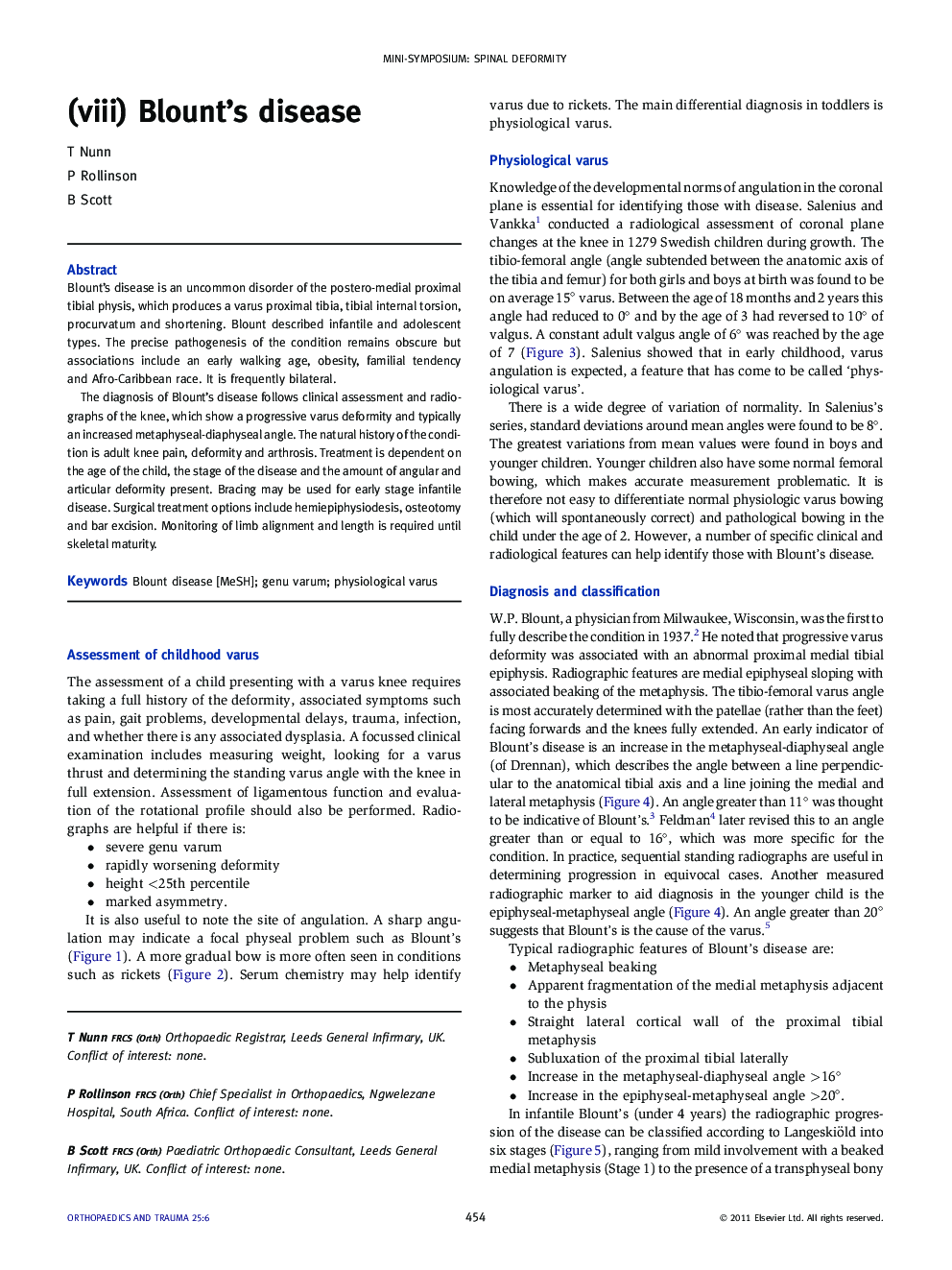| Article ID | Journal | Published Year | Pages | File Type |
|---|---|---|---|---|
| 4080417 | Orthopaedics and Trauma | 2011 | 8 Pages |
Blount’s disease is an uncommon disorder of the postero-medial proximal tibial physis, which produces a varus proximal tibia, tibial internal torsion, procurvatum and shortening. Blount described infantile and adolescent types. The precise pathogenesis of the condition remains obscure but associations include an early walking age, obesity, familial tendency and Afro-Caribbean race. It is frequently bilateral.The diagnosis of Blount’s disease follows clinical assessment and radiographs of the knee, which show a progressive varus deformity and typically an increased metaphyseal-diaphyseal angle. The natural history of the condition is adult knee pain, deformity and arthrosis. Treatment is dependent on the age of the child, the stage of the disease and the amount of angular and articular deformity present. Bracing may be used for early stage infantile disease. Surgical treatment options include hemiepiphysiodesis, osteotomy and bar excision. Monitoring of limb alignment and length is required until skeletal maturity.
